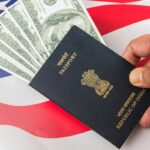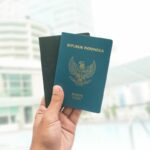In a bid to revitalize tourism and attract high-spending visitors, Thailand has proposed a groundbreaking initiative: a joint visa program for Southeast Asian countries. This program, if implemented, would significantly ease travel restrictions between participating nations, potentially creating a more unified tourist destination for the region.
Joint Visa for Southeast Asian Countries
Prime Minister Srettha Thavisin has been in talks with leaders from Cambodia, Laos, Malaysia, Myanmar, and Vietnam to create a seamless travel zone. Tourists with a single visa could then explore all six countries, which collectively welcomed 70 million visitors in 2023.
Targeting High-Spenders with Easier Travel
The program specifically targets long-haul travellers, known for spending more on their vacations. Simplifying visa procedures and potentially extending the visa validity from 30 to 90 days are key strategies.
This would entice tourists to explore the diverse offerings of Southeast Asia, from Thailand’s pristine beaches to Vietnam’s bustling cities.
Also Read: Thailand to Expand Visa-Free Travel to Boost Tourism
A Boon for Business and Trade
This initiative aligns with Thailand’s broader goal of becoming a regional hub for aviation and logistics. A thriving tourism sector not only generates significant revenue but also acts as a buffer against sluggish exports and a weak global market.
A Cornerstone of Economy
Tourism plays a crucial role in Southeast Asia’s economic well-being. In Thailand alone, the industry contributes roughly 20% of jobs and 12% of the GDP. Historically, tourism has mitigated downturns in manufacturing, highlighting its critical importance.
Challenges and Considerations
Industry leaders like Marisa Sukosol Nunbhakdi, a former president of the Thai Hotels Association, are optimistic. She believes “a common visa could make Southeast Asia a more attractive destination for long-haul travellers.”
However, there are hurdles to overcome. Unlike the European Union, Southeast Asian nations have varying immigration policies. Experts suggest that bilateral agreements between countries might be a more achievable first step. Additionally, achieving consensus within ASEAN, known for its slow decision-making processes, could pose a challenge.
Also Read: Thailand: Don’t Get Denied Entry! Check Documents & Financial Requirements
Conclusion
While the joint-visa program represents a significant step towards regional integration and tourism growth, its successful implementation hinges on effective coordination, political will, and addressing inherent challenges.
Despite uncertainties, stakeholders remain hopeful that collaborative efforts will yield tangible benefits for tourism and economic development in Southeast Asia.
Follow and connect with us on Facebook, Twitter, LinkedIn, Instagram and Google News for the latest travel news and updates!





